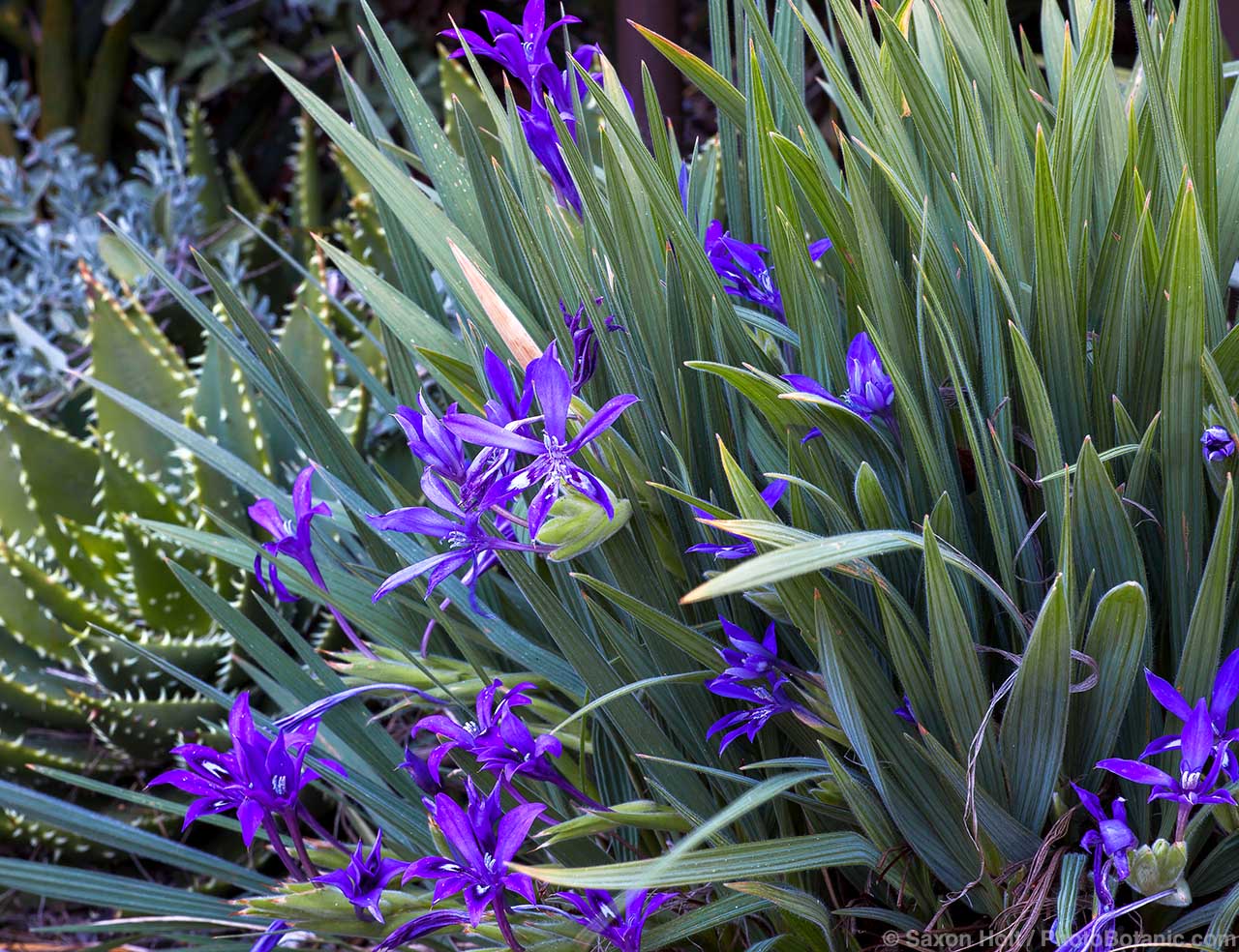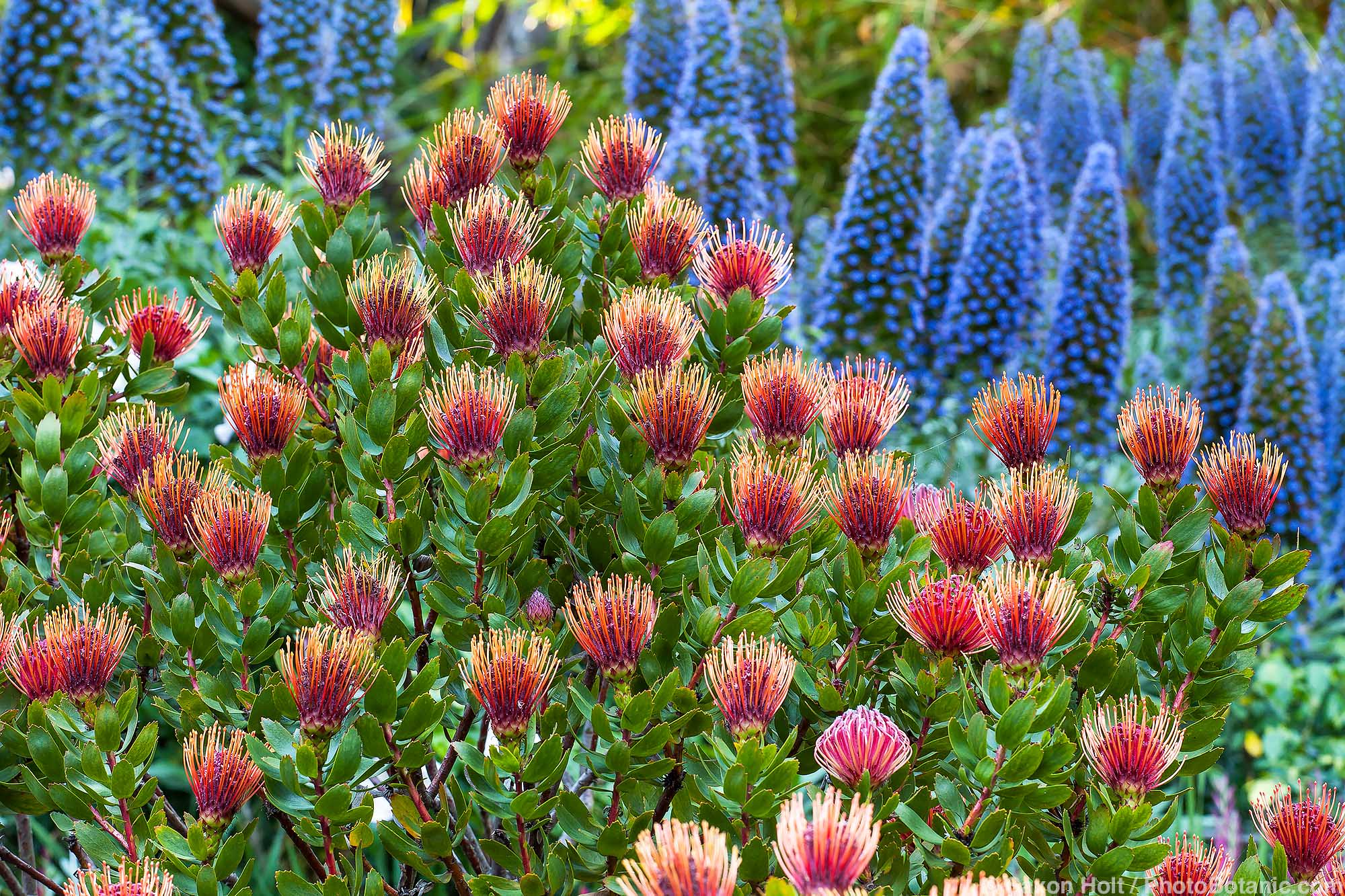Seaside Daisy
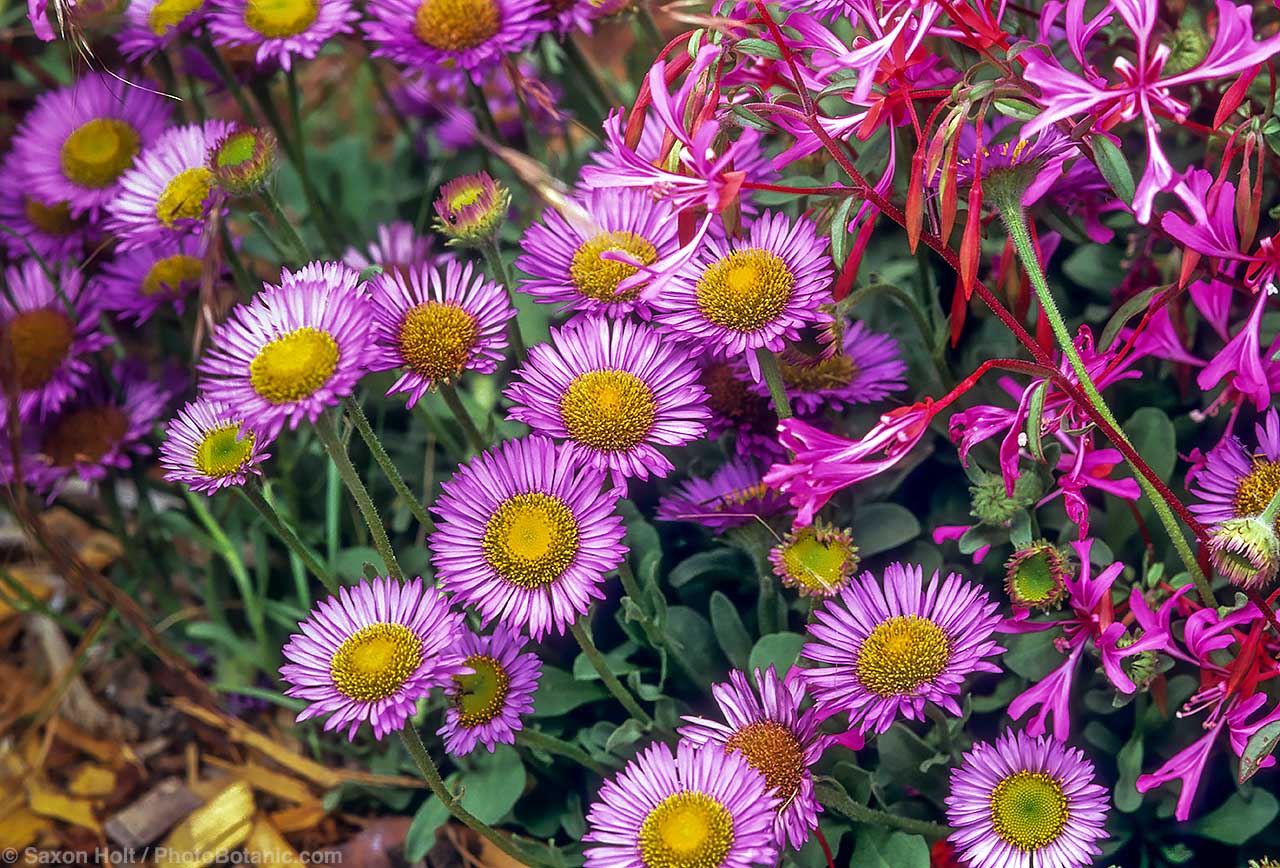
Share This!
Erigeron glaucus, the aptly named seaside daisy, is an herbaceous perennial or subshrub with composite flowerheads that blanket the plant from spring into fall. Native to coastal bluffs and dunes from northern Oregon south to Santa Barbara County, California, its flowers are wildly popular with bees, butterflies, and other pollinators.
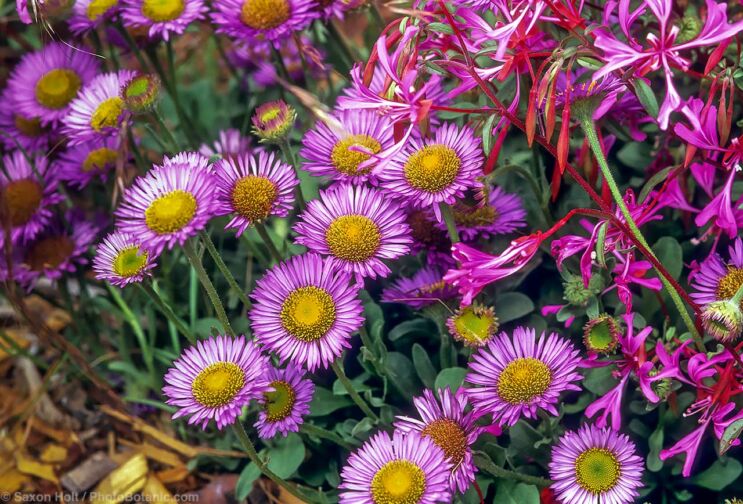
Erigeron glaucus (seaside daisy)
The species is somewhat variable. Habit ranges from a nearly flat mat to a mound more than two feet tall. The semi-succulent leaves can be grayish green, dark green, or bright green and broadly lance-shaped to oval, spoon-shaped, or spatulate, often with wavy edges and a few tiny teeth. Plants spread by rhizomes and by seed but usually not aggressively.
Flowerheads may rest just above the foliage or stand 6-10 inches higher on upright stems. The central disc florets are always some shade of yellow, while ray florets vary from deep purplish blue to pale lavender, pink, or white. In some plants the rays are short and narrow, while in others they are broader or longer. Many have well over a hundred ray florets in a stacked, semi-double arrangement.
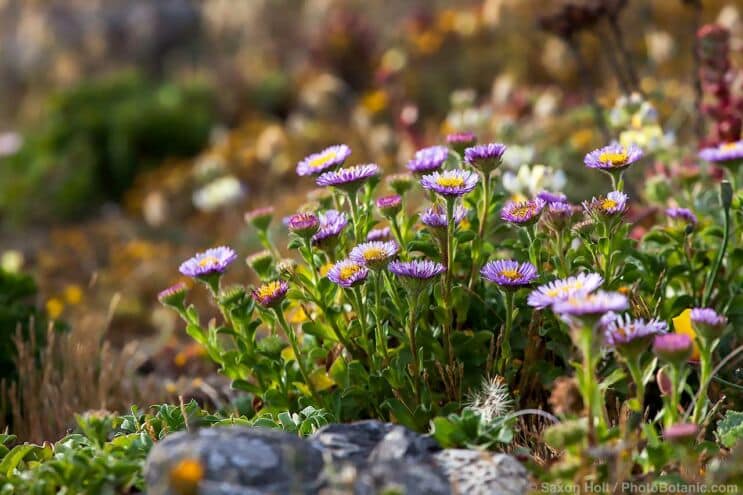
Erigeron glaucus on a coastal bluff at Sea Ranch, Sonoma County, California
More than a dozen selections of seaside daisy are currently in the nursery trade. ‘WR’, selected by and named for plantsman Wayne Roderick, is probably the most adaptable. This cultivar is presumed to be a hybrid involving another Erigeron species more tolerant of temperature extremes. Discovered along the northern California coast near the border with Oregon, ‘WR’ is 8-12 inches tall and spreads 18-24 inches wide with pale bluish lavender flowers held well above the foliage.
‘Wayne Roderick’ is somewhat taller than ‘WR’ and bears darker purplish flowers on shorter stems. The two names tend to be used interchangeably so you can’t be certain which plant you have in hand unless you have seen it in bloom.
‘Bountiful’, a garden selection from England, bears unusually large lavender flowers over an especially long season. Foliage is less than a foot tall and spreads two feet wide. ‘White Lights’, selected in Sonoma County, California, is about a foot tall and 2-3 feet wide with spoon-shaped, mid-green leaves and bright white flowers.
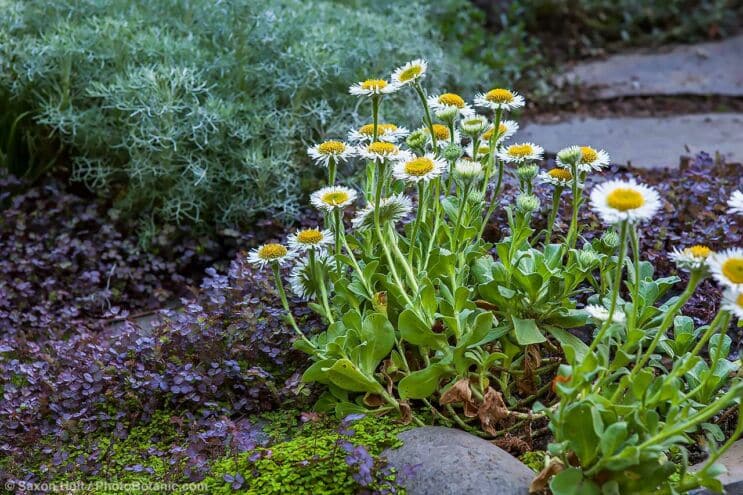
Erigeron glaucus ‘White Lights’
‘Cape Sebastian’ makes a compact, dense mat, 4-6 inches tall and spreading 18-24 inches wide. Discovered in Oregon just north of the border with California, this selection has dark green leaves and masses of small, lavender flowers.
‘Cape Sebastian’ is the lowest and most compact of the Erigeron glaucus selections, but there are other mat-forming choices. ‘Olga’, also from Oregon, is similar but a little taller and less wide with flowers on taller stems. ‘Ron’s Pink’ is a low-growing selection with purplish pink flowers. ‘Sea Breeze’, 6-8 inches tall, has reddish lavender flowers. All of these are good candidates for containers, small spaces, and rock gardens.
Seaside daisy and all of its cultivars are best near the coast where they need little to no summer water, especially in the summer-fog zone. Inland most need occasional to moderate water and protection from hot afternoon sun. Almost any soil will do as long as drainage is good –-or near-perfect in areas with heavy winter rains. Plants are evergreen in mild-winter climates and flowering can be almost year-round if spent flowers are regularly removed.
Share This!
Related Articles
By: Nora Harlow
By: Nora Harlow
By: Nora Harlow




